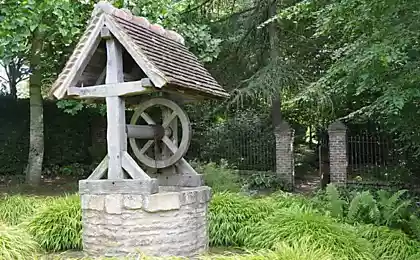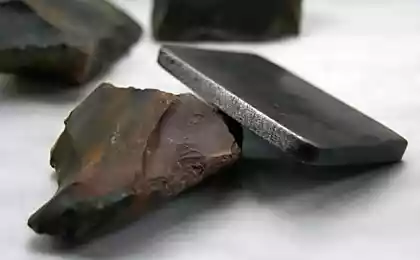220
A penny replacement for purchased rain trays, a home builder for joy
Protecting your home from rainwater is an important part of any building. If the rainfall is not organized correctly, Moisture can disrupt the integrity of walls or foundations. But how do we solve this problem? The purchase of special rain trays can fly into a large penny.

You can direct rain drains in the right direction on your own. This will help to save money, and will work no worse than purchased drainage systems. We understand how to find a way out of the situation, protect your favorite house from possible damage, and your wallet from unnecessary spending.
Rain drains would be good to start with. Ask about the cost of rain in your city. So to speak, appreciate. So you will know how much it costs, and already you can at least imagine how many such items you would have to buy. And how much to overpay.
After the theoretical part of the work, you can proceed to the practical and prepare a place where future rain trays should be placed in the yard. In addition, you need to calculate how much cement you may need to make a solution on which the rain drains will be laid. Pay attention that they, based on their direct purpose, must withstand large flows of water. It is possible to make the cement solution more rigid and reliable.
View this post on Instagram
A post shared by Architect (@howard_rorck)
A wonderful alternative for craftsmen with golden hands Replace purchased rain drains with asbestos cement pipe. The material is durable, not worse than store rain trays. But most importantly, at the exit we have many times more length than we would have to buy. How does it work? Very simple.
You need to pick up a pipe of such diameter, so that you can easily cut it into three smooth elements - three identical grooves, which will successfully replace purchased rain trays. Only cut the pipe should be extremely careful, the Bulgarian is a rather dangerous tool.
View this post on Instagram
A post shared by Planting KZ (@plantingkz)
After cutting and fitting the pipe under the necessary parameters, you need to prepare a solution on which a homemade rain tray will be laid. Masters are advised to make a cement solution of low mobility, so that during the laying of trays it does not spread and is not squeezed beyond the permissible limits. Yes, the preparation of such a solution will require more cement, but believe me, it is definitely worth it.
View this post on Instagram
A post shared by Planting KZ (@plantingkz)
For convenience and smooth application of a layer of cement mortar, You need to pull a guide thread. If the solution was liquid, it would have to make a special formwork. And with the further installation of rain trays, it would protrude on the sides or unevenly distributed.

As a result, this method will help you save money, and do everything yourself, without much effort. Of course, at first it may seem too complicated and intricate. If there are certain doubts, it is better to ask advice from friends, friends or relatives. Read more information about future work, consult the specialists of construction stores. Most importantly, don’t lose your enthusiasm! You can do anything!

You can direct rain drains in the right direction on your own. This will help to save money, and will work no worse than purchased drainage systems. We understand how to find a way out of the situation, protect your favorite house from possible damage, and your wallet from unnecessary spending.
Rain drains would be good to start with. Ask about the cost of rain in your city. So to speak, appreciate. So you will know how much it costs, and already you can at least imagine how many such items you would have to buy. And how much to overpay.
After the theoretical part of the work, you can proceed to the practical and prepare a place where future rain trays should be placed in the yard. In addition, you need to calculate how much cement you may need to make a solution on which the rain drains will be laid. Pay attention that they, based on their direct purpose, must withstand large flows of water. It is possible to make the cement solution more rigid and reliable.
View this post on Instagram
A post shared by Architect (@howard_rorck)
A wonderful alternative for craftsmen with golden hands Replace purchased rain drains with asbestos cement pipe. The material is durable, not worse than store rain trays. But most importantly, at the exit we have many times more length than we would have to buy. How does it work? Very simple.
You need to pick up a pipe of such diameter, so that you can easily cut it into three smooth elements - three identical grooves, which will successfully replace purchased rain trays. Only cut the pipe should be extremely careful, the Bulgarian is a rather dangerous tool.
View this post on Instagram
A post shared by Planting KZ (@plantingkz)
After cutting and fitting the pipe under the necessary parameters, you need to prepare a solution on which a homemade rain tray will be laid. Masters are advised to make a cement solution of low mobility, so that during the laying of trays it does not spread and is not squeezed beyond the permissible limits. Yes, the preparation of such a solution will require more cement, but believe me, it is definitely worth it.
View this post on Instagram
A post shared by Planting KZ (@plantingkz)
For convenience and smooth application of a layer of cement mortar, You need to pull a guide thread. If the solution was liquid, it would have to make a special formwork. And with the further installation of rain trays, it would protrude on the sides or unevenly distributed.

As a result, this method will help you save money, and do everything yourself, without much effort. Of course, at first it may seem too complicated and intricate. If there are certain doubts, it is better to ask advice from friends, friends or relatives. Read more information about future work, consult the specialists of construction stores. Most importantly, don’t lose your enthusiasm! You can do anything!
Centenarians shared a daily routine that will help to meet the hundredth birthday
Formation of roads on the basis of concrete slabs: features, stages























